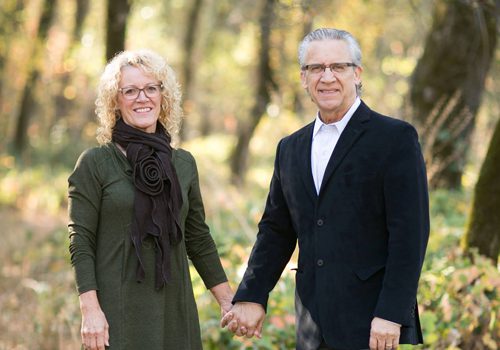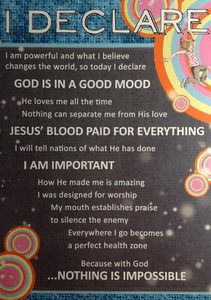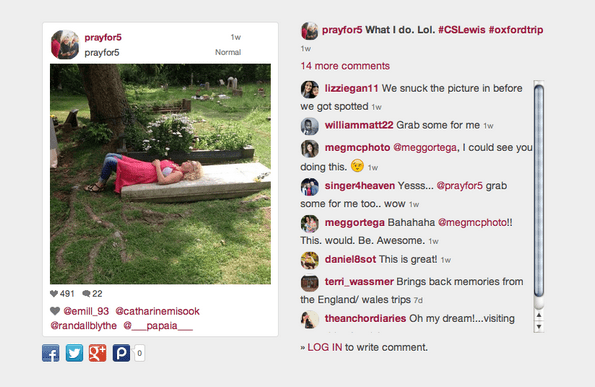
Bethel Redding, an Evangelical charismatic multi-campus church, is located in Redding, California. Its senior pastors are Bill and Beni Johnson. What follows is a compendium of information about Bethel and its methodology.
Bethel offers a surefire way parents can help children troubled by depression and discouragement. Let me introduce you to Vintz, the puppet.

According to the product listing:
Great for Ages 4-10
Included in the Curriculum:
*Vintz the Puppet: He lives in a barrel and brings the message of God’s presence and joy as priority number one.
*Manual: The manual contains 13 lesson supplements. Short lessons designed to incorporate joy into every week in your children’s ministry.
*DVD: On the DVD is a demonstration of one of the lessons, as well as an interview with Seth Dahl.
Seth Dahl believes in raising a generation of children who are strong (joyful) in the Lord. One of his passions is for them to encounter God and experience His works, preventing them from living a life of Christian form without the Reality. Seth and his family live in Redding, California where he is the Children’s Pastor of Bethel Church.
Here is a video from Bethel detailing how children are taught to prophesy and speak in tongues:
This video shows that Bethel is serious about indoctrinating children in the charismatic way of life.
In the following video, Seth Dahl, Bethel’s children’s pastor, details Bethel’s four core values for children:
- God is in a good mood
- Jesus’ blood paid for everything
- I am important
- Nothing is impossible
On Sundays, children gather together at Bethel and recite the Bethel Kids Declaration:
On Sundays, children gather together at Bethel and recite the Bethel Kids Declaration:

Here is another I Declare statement Bethel uses in its children’s programs:

I think I can safely add Bethel Redding to the list of churches that emotionally and mentally manipulate children in the name of Jesus.
Bethel Redding attracts thousands of people to its services. Attendees come expecting to see God work in supernatural ways. According to a 2010 Record Searchlight article, Bethel provides healing rooms for those in need of a touch from God. Amanda Winters reports:
Every Saturday morning from 9 to 10:30 a.m., two large rooms in Bethel Church are transformed into the Healing Rooms Ministry; a place where people can come and receive prayer for any kind of ailment.
Randy Castle, who was acting director that Saturday, said the healing rooms generally see 100 or so visitors – and up to 300 on a busy weekend.
Four teams with about 70 people each work the Healing Rooms. Many pray over visitors, commanding the body to be healed, speak in tongues and invite the presence of the Holy Spirit through impartation, or laying on of hands. Others, Castle said, play worship music in the “Encounter Room” where people can go bask in the presence of God.
Music performed in the Encounter Room made its way through the Healing Room speakers, repeating “God is good, God is good, God is good,” while worshippers prayed, danced, laughed, cried, fell down and lay on the floor under what they say is the power of God. According to Bethel leadership, this is the room where people are cured of cancer, broken bones, chronic pain, multiple sclerosis and a host of other diseases.
Later in the article, Winters writes about an interview she conducted with Bethel senior pastor Bill Johnson:
Bill Johnson, Bethel’s senior pastor, settled into a plush black couch in his office, his arm around an animal-print pillow. Before anything else, he wanted to talk about healing.
“We just had another brain tumor case of cancer healed,” he said. “We have a lot of that kind of stuff happen. It’s verified by doctors, they do the tests and the cancer’s gone. We have a lot of that sort of thing – miracles.”
Johnson, who himself required hernia surgery last year and wears prescription glasses, teaches that the supernatural miracles that happened in Biblical times still happen today if people just value God’s presence and open themselves up to receiving it.
“Because we have such value for his presence with us, things just happen,” he said.
Johnson said that healings happen all the time and he doesn’t feel he needs to provide any documentation or hard evidence to inquiring minds. He also said he doesn’t check up on people who come to Bethel for healing – he doesn’t have the time.
“If you’re sitting here and you say, ‘I’ve been deaf in my left ear since childbirth,’ and I pray for you and then I have you close your right ear and I whisper 10 feet away and you can hear me, I don’t feel like I need to get a doctor’s report,” he said. “I’m happy you’re happy you can hear. That’s enough for me.”
Though he had people praying for his hernia to heal early in 2009, the condition still required surgery and Johnson said that was OK because God can use doctors as well as he can use Bethel’s healing teams, though both are necessary.
“The doctors serve a great purpose but they’ll tell you they can’t fix everything,” he said. “Some things need to be fixed by a miracle or just aren’t fixed at all.”
Johnson said in his sermons he often tells the congregation stories of miraculous healings to encourage them. One such story was about a group in the small, rural city of Shelton, Wash., whose goal it is to raise people from the dead.
Bethel Redding also operates a college of sorts, Bethel School of Supernatural Ministry (BSSM) . According to its website, in 2012-13 over 1,800 students took classes through BSSM. Much of BSSM’s training consists of reading books. Students receive little theological training. The focus of the school is the impartation and use of supernatural gifts.
Think all this supernatural mumbo jumbo is funny and of no consequence? Think again. In 2008, Jason Michael Carlsen, along with Sarah Koivumaki and Zachary Gudelunas, both students at BSSM, traveled to a California cliff to have a party. Already drunk, Carlsen fell off the 200 foot cliff. Instead of immediately dialing 911, Koivumaki and Gudelunas decided to put their BSSM skills to work. The Record Searchlight reports:
Rather than call police when their drinking partner fell ? or was pushed ? off a nearly 200-foot cliff, two students at a Redding Bible school tried first to reach the severely wounded man and pray him back to life, a lawsuit alleges.
In a lawsuit filed this month in Shasta County Superior Court exactly two years to the day after he was pulled by search-and-rescue crews from the banks of the Sacramento River, Jason Michael Carlsen alleges that when Bethel School of Supernatural Ministry students Sarah Elisabeth Koivumaki and Zachary Gudelunas couldn’t reach him to heal him with their prayers, they spent hours debating whether to call the police.
Bethel’s members purport to have the ability to heal people through prayer and bring the dead back to life.
The two later told police they thought Carlsen was killed in the fall.
Worried that they would be exiled from the church, the two Bethel students also went so far as to try to cover up evidence they’d even been at the top of the cliff, the lawsuit alleges…
Carlsen, by the way, is now a paraplegic.
According to Beni Johnson, in 2009 Martin Scott came to Bethel and gave the church a prophetic word about the California drought. Johnson thinks the recent rains are proof that God fulfilled Scott’s utterance.
(video no longer on Vimeo)
Beni Johnson also practices what is commonly called grave sucking (or mantle grabbing). What follows is a picture of Johnson lying on the grave of C.S. Lewis, hoping to suck out of Lewis’ corpse some of his supernatural power.

According to a February 20,2016 Record Searchlight article, Bethel has submitted plans to the planning commission for a new church facility. If approved, Bethel’s new 39.3 acre church plant will include:
- A 171,708-square-foot campus
- 1,851 parking spaces
- An auditorium that will seat 2,600
- Classroom space at the School of Supernatural Ministry to enroll up to 3,000 students
There is no question is my mind that Bethel Redding is a dangerous Evangelical cult. While people often think of cults being small, secretive, out-of-the-way sects or churches, Bethel is a reminder that some cults hide in plain sight.
If you have ever attended Bethel or had any interaction with its members, please share your experiences in the comment section.
Updated:
Molly Hensley-Clancy, a writer for Buzz Feed, recently wrote a feature article on Bethel. Here’s an excerpt from her insightful article:
The basic theological premise of the School of Supernatural Ministry is this: that the miracles of biblical times — the parted seas and burning bushes and water into wine — did not end in biblical times, and the miracle workers did not die out with Jesus’s earliest disciples. In the modern day, prophets and healers don’t just walk among us, they are us.
To Bethel students, learning, seeing, and performing these “signs and wonders” — be it prophesying about things to come or healing the incurable — aren’t just quirks or side projects of Christianity. They are, in fact, its very center.
….
This is the Bethel School of Supernatural Ministry’s real goal: creating spiritual warriors, young people who will go out into the world armed with just the kind of supernatural gifts that Bethel believes will bring people into the Kingdom of God.
“Jesus is bringing the Kingdom, and he’s doing it through signs and wonders,” says Dann Farrelly, BSSM’s dean. “They’re the things that make people go, ‘Huh, there’s something about you, about this.’ Jesus even said: You don’t have to believe in me, you believe in the signs I’m doing.”
More simply: Miracles are a really good way to convert people.
BSSM is built on the idea that we are all “naturally supernatural”: We all have the potential to heal the sick and to hear God’s vision for the future. It’s ours because it’s Jesus’s, says Farrelly: Jesus does the work, and humans act as conduits. The school’s job is to foster the supernatural gifts of signs and wonders — to teach people to hear God’s voice and turn it into prophecy.
…..
Stefan, who spent three years at Bethel before eventually leaving evangelicalism, felt for his first few weeks at Bethel like he was really seeing miracles: healings and prophecies that felt like they had come directly from God. Eventually, that changed.
Stefan looks back at his time at BSSM and sees an array of “psychological mind games” — healing via placebo, prophecy through confirmation bias. He’s done some reading lately, he says, on how magicians convince crowds that they are seeing magic and not magic tricks; how believing that you are going to recover from an illness or that your injured limb has been healed can, sometimes, be enough to accomplish healing.
“I think, for me, Bethel was the beginning of realizing, like, this is all bullshit,” says Chris, who went to Bethel in the mid-2000s and asked that his last name not be used because he still has close friends in the church. “When you do it, you convince yourself that this is all really real. But it’s cold reading, that’s what it is. You just dress it up in Jesus.”
Chris was a good prophet, his teachers told him. While he was studying at Bethel, he once had a vision from The Song of Deborah as he prayed over a woman whose name he did not know. As he told her this, she cried out in surprise: Her name was Deborah.
“What I see now is, those are random thoughts,” Chris says. “Ninety-nine times out of a hundred, your prophecies are horrible misses. But you don’t remember them being a terrible flop — you remember the one time it worked.”
At BSSM, Chris said, the focus was on testimonies of success — retelling to a group of fellow students the stories of the one “holy shit” moment when their prophecy had worked. No one talked about the times they had failed.
….
Bethel has offered tens of thousands of people a chance to be healed at its massive conferences and on mission trips across the globe. And hundreds of people make the pilgrimage to their Healing Rooms in Redding every week. Many, I am told, practice Bethel’s brand of Christianity, but others are mainstream Christians, dipping their toes in the waters of more radical faith. Others, like me, are not religious at all.
On a Saturday morning, I sit in the lobby of the Healing Rooms, clipboard in my lap and a pen in my hand. On my right knee is the big, ugly black brace, one that I’ve been sporting for six weeks, since a soccer injury left me with two completely torn ligaments. I’m here to have my knee healed — or at least that’s what I write on the Healing Room intake form I’ve been given, which asks me to list my “Physical Prayer Needs.”
I have a lot of physical prayer needs: At the moment, I can’t ride a stationary bike, go down stairs, or even bend my knee at a right angle. I write those down. The form also asks whether I’m “born again” and if I’ve been “baptized in the Holy Spirit.” I check “no” for both.
After an introductory class on the “Biblical foundations of Healing,” we’re led into the main sanctuary, a kind of holding room which is already buzzing with people. Concentric circles of chairs, some of them draped with colorful blankets and pillows, have been set up around a large group of easels where people are painting prophetic art on giant canvases: a pair of hands touching each other, a tree shedding blue leaves. A praise band of beautiful young people wearing flannel plays up on the stage, crooning hypnotic, repetitive strains of viral Bethel Music songs. In the corner, in front of a cross draped with sequined gold cloth, a woman lies prostrate and unmoving, her forehead pressed to the carpet. She does not move the entire time I’m in the sanctuary.
In the back of the room, a row of people with telemarketer-style headphones and laptops are conducting healing sessions via Skype. A pair of large screens in front of us remind us that only Bethel’s ministry team are allowed to heal.
I settle in the corner, waiting for my number to be called, and watch as a trio of prophetic dancers, barefoot and carrying colorful scarves, gather around a woman near me who looks very much like she has just emerged from a brutal chemotherapy treatment. They ask if they can dance for her. She begins to cry, clutching her husband’s hand, as they twirl around her.
After a while, a woman interrupts the praise band to tell us that there is a “healing pool” forming in front of the stage. “It’s a pool where the impossible is possible, where oil and water mix, and here there’s going to be real healing,” she says. As dozens of people come up to the pool, collapsing to their knees or raising their hands in the air, the woman’s voice becomes a hypnotic chant: “Oil and water mix here, outside in the world they don’t, but in here they doooo. Oil and water mix here…”
The ailing woman and her husband make their way to the pool and begin to dance with each other, swaying slowly.
Later, we’re herded into another, smaller room, one where intense healing is going to take place. We wait our turn and watch Bethel’s healers do their work, stationed in pairs in front of people clutching their intake forms.
The woman next to me, who looks about my age, has a squirming little boy on her lap. I peek at her form, which lists just two ailments, scrawled in all-caps: PARASITES and HEARTBREAK.
Finally it’s my turn. “So, you’re not saved, and you’re not born again, right?” one of my healers asks, scrutinizing my form.
I explain clumsily that I was “raised Catholic,” which is only barely true. With my utter lack of faith made clear, the prayers focus not just on my knee, but on my own relationship to God, asking him to “help me on my journey towards faith.”
I can tell I’m a tough case, because a third healer comes over to us, and then a fourth. Soon I’m surrounded by people praying for me, one woman’s hand on my shoulder, another on her knees in front of me, and the force of their expectation — desperation, almost — is palpable. Unrelentingly, every few minutes, they ask me how I’m feeling, whether I’m better.
I try to deflect some of their questions, but it never works. When one healer asks me what I feel, I tell her I feel “your energy and prayers.” She jumps back, “But what about your knee?”
“Well, it’s a really serious injury,” I try. “So I think it might take some time.”
The woman seems almost offended. “Time?” she says. “Jesus doesn’t need time! Jesus can heal you right away.”
We start praying again, and I start feeling a little desperate, like I’ll never get out of here. The next time they ask me how my knee feels, almost automatically, without thinking, I lie.
“I think it’s more flexible now,” I say. I move it back and forth, and I can see my healers’ eyes light up. “I think it’s getting better. Thank you.”
“Thank you, Father!” one of them cries out, taking my hand. We’re both, I think, relieved, though maybe for different reasons. “Thank you for beginning this journey to healing.”
It’s finally over, and my healers ask me to give them my intake form. When I take the paper off of the clipboard, I notice there’s a back side, too, meant to be filled out by Bethel staff: a checklist labeled “Miracles Performed.” It includes healed shoulders and knees, zapped tumors, cured cancer, and limb-straightening, as well as soul-saving. At the very bottom of the list is the very miracle that the Stanford professor told Stefan would convert him: “Limb regrown.”
I hand the form over, wondering if they’re going to check me off as a Miracle Performed. As I leave the room, I think I see one of my healers do just that.
A week later, when I’m back in New York, I pull myself up onto my physical therapist’s table, facedown. The excruciating process of recovering from my injury has, so far, involved forcing my locked-up knee to bend slightly farther at every appointment, a process that always makes me cry out in pain, and sometimes leaves me with tears in my eyes.
“All right, let’s see how you’re doing,” she says. Before I left for Redding, I had told her where I was headed and why, and as I lie there on the table, she jokes, “Maybe you’re healed! This could be our last day.”
I squeeze my eyes shut and feel her bending my knee back. “Wow,” she tells me. “You’re doing really well. You’ve got much more flexibility, actually. I’d say at least 20 degrees.”
I had a lot of downtime in Redding, and I spent most of it doing physical therapy — several hours a day of excruciatingly painful work, lying on the hotel room floor and using a strap to force my knee to bend farther and farther. But still. I turn around to my physical therapist, and she and I exchange a look: just a split second.
You can read the entire article here
Here’s a deeply troubling video of a woman from Bethel Redding putting her beliefs into practice:
